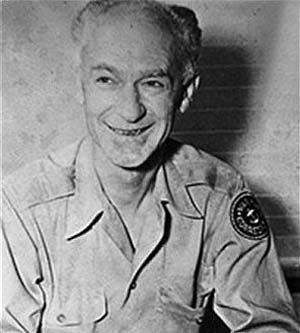
The Indiana Natural Resources Commission agreed in November to turn over the closed Ernie Pyle State Historic Site to the nonprofit Friends of Ernie Pyle group, which hopes to raise $1 million for an endowment fund that could sustain the museum.
The Ernie Pyle museum’s move into private hands began a year ago, when state agencies were ordered by Gov. Mitch Daniels to shave their budgets by 10 percent. The Department of Natural Resources decided to save $50,000 a year by closing the Pyle museum, which was by far the least-visited of the state historic sites with about 1,500 visitors a year.
Plans for moving key Pyle memorabilia to the Indiana State Museum in Indianapolis, hasn’t satisfied residents in his Vermillion County hometown.
“Well, Ernie Pyle wasn’t born in Indianapolis!” Cynthia Myers, president of the Friends, told The Indianapolis Star. “He was born in a little town, he was born in Dana, and that’s where all his writings came through.”
Members of the Friends board have been with the American Legion and other veterans groups as they look to start raising money.
“We don’t have covered bridges. We don’t have rock formations,” said Phil Hess, a Dana farmer and the Friends’ vice president. “Ernie Pyle is all we have. If you meet somebody traveling, they say, ‘I’ve never heard of Dana.’ ‘Well, it’s the home of Ernie Pyle.’ That’s just what you say.”
Pyle grew up on a farm outside Dana and attended Indiana University before embarking on his journalism career. He was a household name during World War II for his dispatches about individual soldiers.
His columns for Scripps-Howard Newspapers won a Pulitzer Prize in 1944, but he was killed by a Japanese machine gunner on a Pacific island in April 1945.
The state historic site opened in 1976. It was expanded in 1995 with the opening of a new visitor center constructed from two authentic World War II Quonset huts, but was only open May through September.
Hess said he feels a responsibility to try and keep the museum going despite being in a little-traveled rural area some 30 miles from the nearest interstate.
“We’re going to advertise,” Hess said, “but I don’t know how many people we would attract. You have to want to go to a small museum about World War II and journalism. And not everybody wants that.”
___
Information from: The Indianapolis Star, http://www.indystar.com
Copyright 2011 Associated Press. All rights reserved. This material may not be published, broadcast, rewritten, or redistributed.
AP-CS-01-01-11 1011EST


